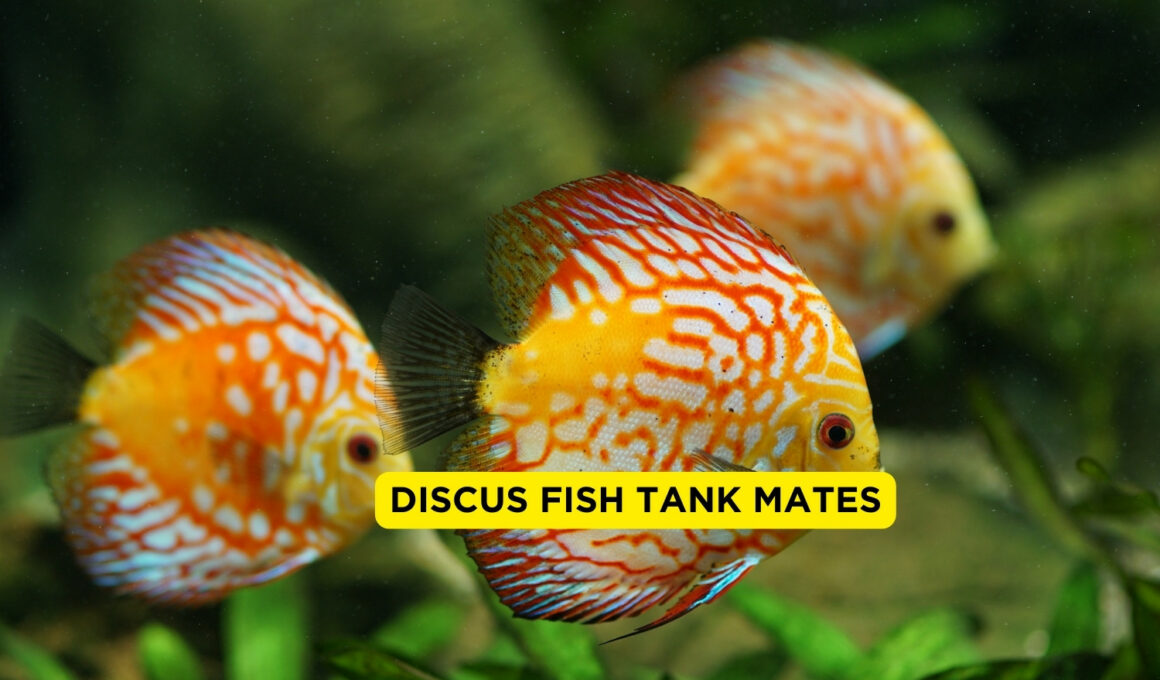In this article Show
If you’re passionate about maintaining a vibrant and healthy home aquarium, especially one with discus fish, this article is tailored for you. Discus fish, renowned for their striking colors and majestic presence, are a jewel in the aquarium world.
However, their serene beauty comes with a need for specific tank companions to ensure a harmonious environment. Selecting the right tank mates for your discus fish isn’t just about adding variety to your aquarium; it’s about understanding and catering to the unique needs of these sensitive creatures.
In this guide, we’ll explore nine compatible tank mates that can coexist peacefully with your discus fish. These selections are based on years of experience and a deep understanding of what makes a balanced and stress-free environment for these delicate fish.
1. Cardinal Tetra
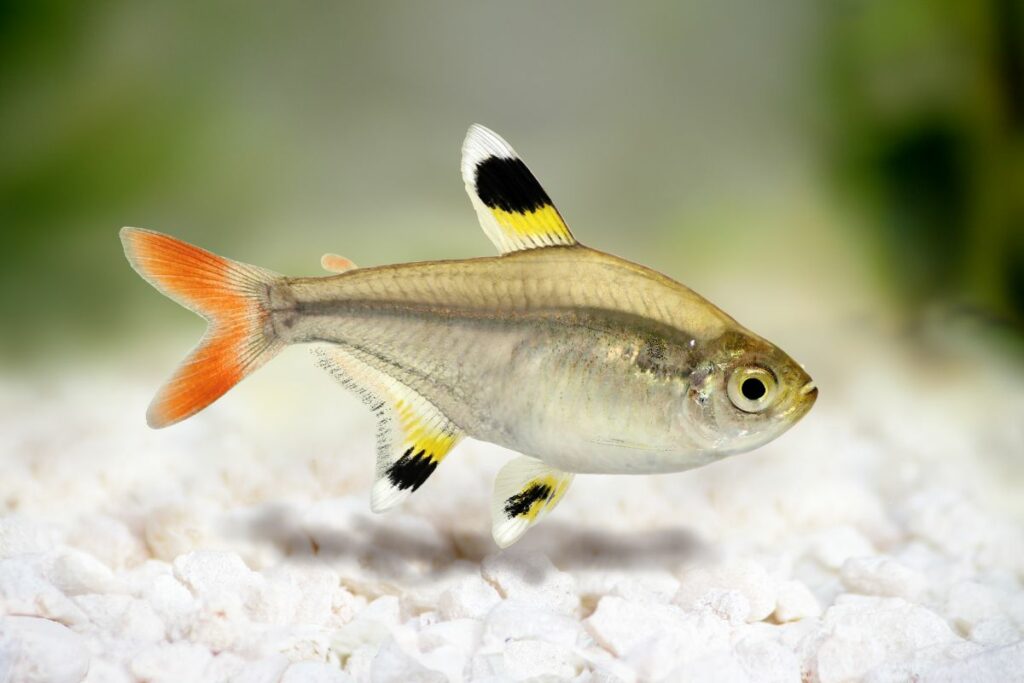
| Features | Details |
| Size | Up to 2 inches (5 cm) |
| Diet | Omnivorous |
| Temperament | Semi-aggressive |
| Care Level | Moderate |
| Minimum Tank Size | 20 gallons (75 liters) |
The Cardinal Tetra is a small, colorful fish that adds a vibrant touch to any aquarium. While they are generally known for their peaceful nature, they can exhibit semi-aggressive behavior, especially in smaller or overcrowded tanks.
Cardinal Tetras can coexist well with discus fish, provided they are introduced into the aquarium properly. It’s essential to monitor their interactions initially, as their semi-aggressive tendencies might surface if they feel threatened or cramped. A well-planned introduction and adequate space can promote peaceful cohabitation.
Cardinal Tetras thrive on a varied diet, including high-quality flake foods, frozen or live brine shrimp, and daphnia. They also appreciate a tank set-up that mimics their natural habitat. This includes plenty of hiding spaces like plants, driftwood, and rocks to give them a sense of security.
Regular water changes and maintaining a stable, warm water temperature are crucial for their well-being. Remember, the well-being of these tetras directly impacts the harmony of your discus fish tank.
2. Corydoras Catfish
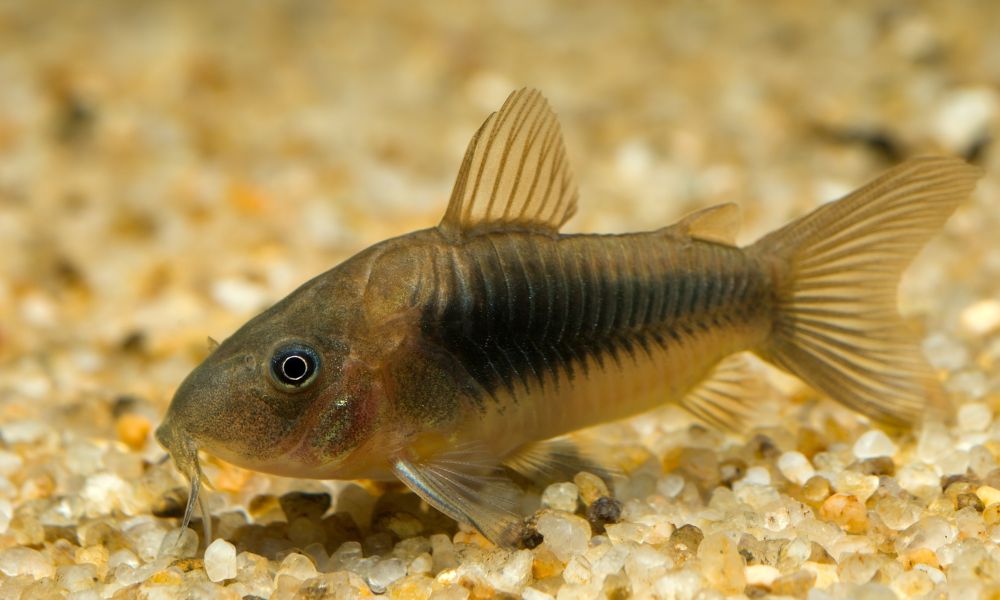
| Features | Details |
| Size | 2.5 to 4 inches (6-10 cm) |
| Diet | Omnivorous |
| Temperament | Peaceful |
| Care Level | Easy |
| Minimum Tank Size | 20 gallons (75 liters) |
Corydoras Catfish are small and active bottom dwellers, known for their diverse and attractive markings. Contrary to their colorful appearance, they are generally peaceful and are not known to be aggressive in community tanks.
These catfish typically coexist well with discus fish. Their peaceful nature makes them suitable companions, especially if they are properly introduced into the tank. It’s important to monitor their interaction at the beginning to ensure a smooth transition and to confirm that the discus fish do not show signs of stress or aggression towards them.
Corydoras Catfish are not demanding when it comes to diet. They do well with a variety of foods including sinking pellets, flakes, and occasional live or frozen foods like bloodworms. They appreciate a tank with soft substrate to protect their delicate barbels and plenty of hiding spots like plants or caves.
Maintaining clean water with regular water changes is crucial for their health. A well-kept tank with these catfish not only adds diversity but also contributes to a cleaner environment, benefiting all its inhabitants.
3. Rummy-Nose Tetra
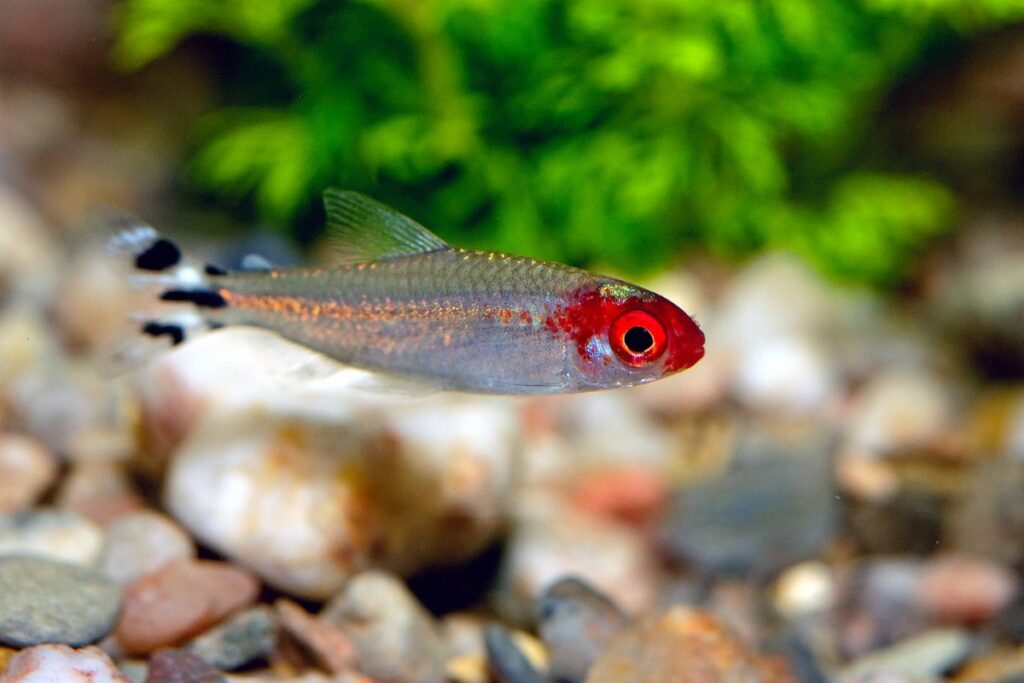
| Features | Details |
| Size | Up to 2 inches (5 cm) |
| Diet | Omnivorous |
| Temperament | Semi-aggressive |
| Care Level | Moderate |
| Minimum Tank Size | 20 gallons (75 liters) |
Rummy-Nose Tetras are small and vibrant fish, known for their distinctively colored noses and striking appearance. Despite their peaceful reputation, they can sometimes exhibit semi-aggressive behavior, especially in environments that are not optimally set up or when they feel threatened.
When introduced properly, Rummy-Nose Tetras generally coexist well with discus fish. It’s crucial to ensure a smooth introduction and to monitor their interactions at the start. A balanced and spacious aquarium environment can encourage peaceful cohabitation between these species.
These tetras require a varied diet that includes high-quality flake food, as well as frozen or live foods like brine shrimp or daphnia. They thrive in an aquarium setup that provides ample hiding spaces and mimics their natural habitat.
This includes dense plantations and driftwood. Consistent water quality with stable temperatures and regular maintenance is key to keeping Rummy-Nose Tetras healthy and active, thereby promoting a harmonious tank environment.
4. Dwarf Gourami
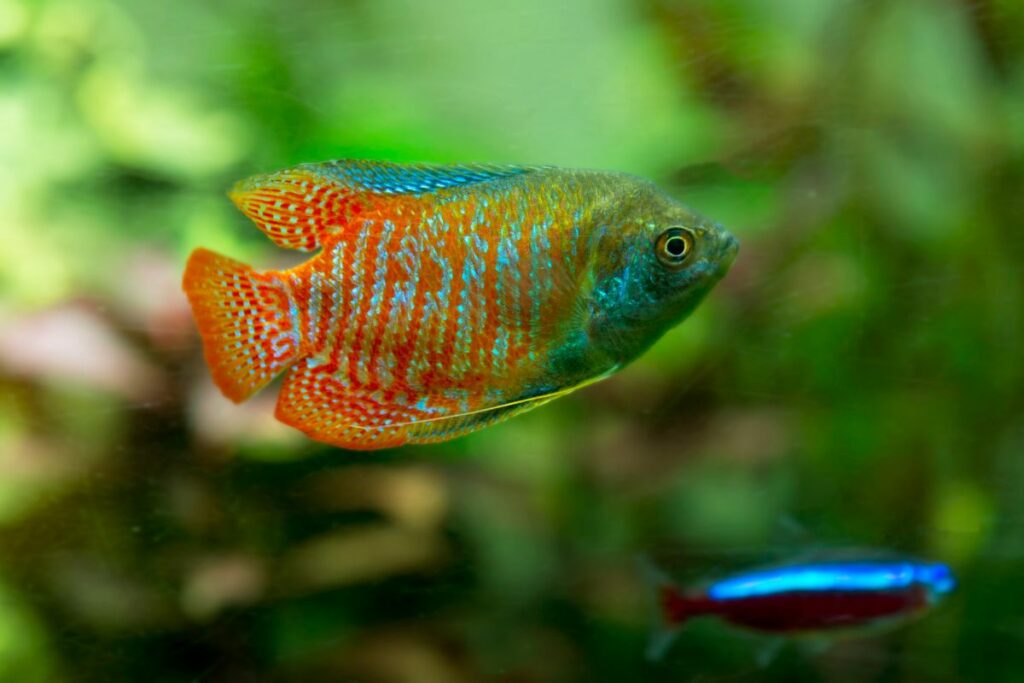
| Features | Details |
| Size | Up to 3.5 inches (9 cm) |
| Diet | Omnivorous |
| Temperament | Semi-aggressive |
| Care Level | Moderate |
| Minimum Tank Size | 20 gallons (75 liters) |
Dwarf Gouramis are small, strikingly colorful fish, known for their vibrant hues and patterns. Despite their generally peaceful nature, they can display semi-aggressive behavior, particularly in cramped conditions or if they feel their territory is being encroached upon.
These gouramis can generally coexist well with discus fish, provided they are introduced thoughtfully into the aquarium. It’s important to observe their behavior initially, as Dwarf Gouramis can sometimes assert dominance. Proper introduction and sufficient space are key factors in ensuring a harmonious tank.
Dwarf Gouramis benefit from a varied diet that includes flakes, pellets, and occasional live or frozen foods like brine shrimp. They appreciate a well-structured tank with plenty of hiding spaces such as plants and caves.
This not only provides them with security but also helps to mitigate any potential stress-related aggression. Regular tank maintenance, stable water conditions, and avoidance of overcrowding are crucial to keep Dwarf Gouramis healthy and to maintain peace within the tank community.
5. Bristlenose Pleco
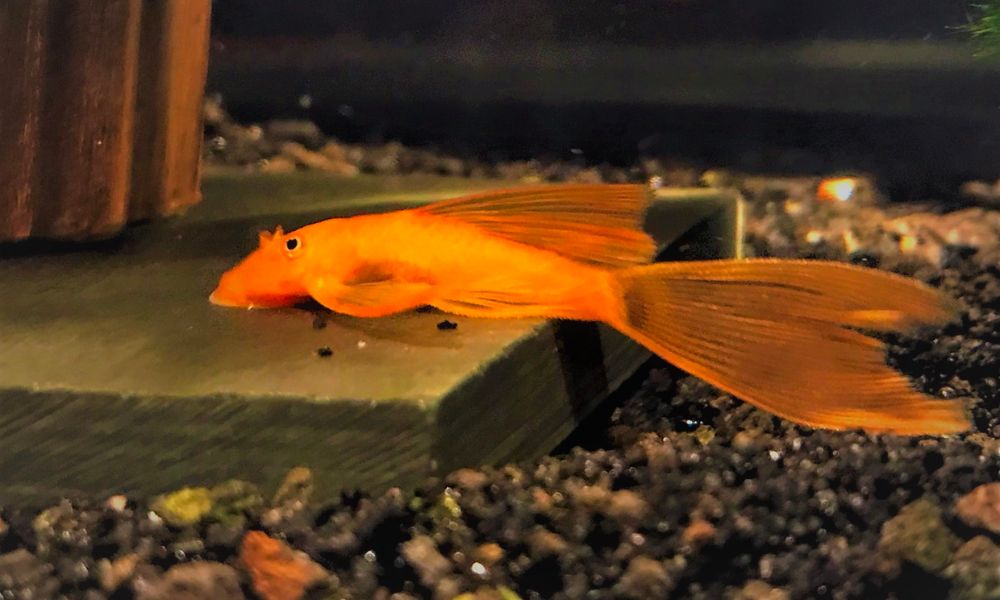
| Features | Details |
| Size | Up to 6 inches (15 cm) |
| Diet | Herbivorous/Algae eater |
| Temperament | Peaceful, but territorial |
| Care Level | Easy |
| Minimum Tank Size | 30 gallons (115 liters) |
The Bristlenose Pleco, a small and intriguing fish, is known for its unique bristles around the mouth and a body covered in armor-like plates. While primarily peaceful, they can be somewhat territorial, especially around their hiding spots.
Bristlenose Plecos usually coexist well with discus fish. Their bottom-dwelling nature means they don’t intrude much into the discus space. However, their introduction should be monitored to ensure they settle in without causing stress to themselves or the discus fish.
Bristlenose Plecos require a diet rich in vegetables and algae. They benefit from algae wafers, zucchini, cucumbers, and occasional treats like bloodworms. Having plenty of hiding spaces is essential for their well-being.
Driftwood is particularly beneficial, as it aids in digestion. Keeping the tank clean and ensuring good water quality is vital, as these fish are sensitive to poor water conditions. Regular maintenance of the tank, including controlled feeding to avoid overeating, will help in keeping a healthy and harmonious aquarium.
6. Harlequin Rasbora

| Features | Details |
| Size | Up to 2 inches (5 cm) |
| Diet | Omnivorous |
| Temperament | Peaceful, slightly active |
| Care Level | Easy |
| Minimum Tank Size |
Harlequin Rasboras are small, colorful fish known for their distinctive triangular black markings. They are generally peaceful, though they exhibit a bit of semi-aggressive behavior when it comes to establishing a pecking order within their school.
These rasboras can coexist well with discus fish, provided they are given a proper introduction into the tank. Since they are active swimmers, it’s important to ensure they have enough space and don’t invade the discus fish’s territory. Observing their behavior after introduction is key to maintaining harmony in the tank.
Harlequin Rasboras thrive on a varied diet including quality flake foods, micro-pellets, and small live or frozen foods like brine shrimp and daphnia. They prefer a tank with dense vegetation and open swimming spaces.
Consistent water quality with regular maintenance is crucial. Offering them hiding spaces, like plants or driftwood, can reduce stress and prevent potential aggression, ensuring a peaceful cohabitation with discus fish.
7. Neon Tetra
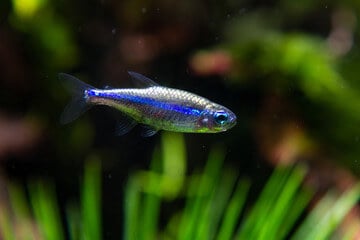
| Features | Details |
| Size | Up to 1.5 inches (4 cm) |
| Diet | Omnivorous |
| Temperament | Peaceful, lightly active |
| Care Level | Easy |
| Minimum Tank Size | 10 gallons (38 liters) |
Neon Tetras are small, strikingly colorful fish, known for their vibrant blue and red stripes. These fish are generally peaceful, but they can exhibit semi-aggressive behavior, typically during feeding times or when establishing a hierarchy within their school.
Neon Tetras generally coexist well with discus fish, especially when properly introduced to the tank. It’s important to provide enough space for them to swim freely without encroaching on the discus fish’s territory. Close observation during the initial period is crucial to ensure a harmonious environment.
A varied diet is essential for Neon Tetras, including high-quality flake foods, and small live or frozen foods like brine shrimp. They appreciate a well-planted aquarium with plenty of hiding spots and open areas for swimming.
Stable water conditions, with a focus on maintaining the right temperature and pH, are vital for their health. Regular tank maintenance, including frequent water changes, is key to keeping these small fish healthy and reducing stress, thereby promoting peaceful coexistence with discus fish.
8. Siamese Algae Eater
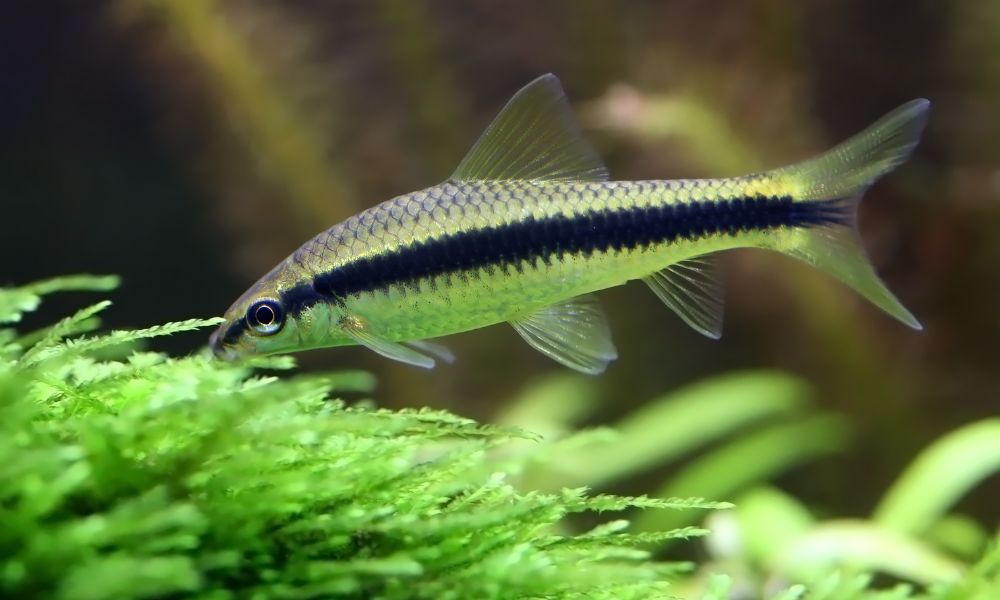
| Features | Details |
| Size | Up to 6 inches (15 cm) |
| Diet | Omnivorous, algae-focused |
| Temperament | Peaceful, can be territorial |
| Care Level | Easy |
| Minimum Tank Size | 30 gallons (115 liters) |
Siamese Algae Eaters are small, streamlined fish, appreciated for their algae-eating habits. They are generally peaceful but can become territorial, particularly around feeding areas or favorite spots in the tank.
These algae eaters can coexist well with discus fish, but their introduction into the tank should be monitored. It’s essential to ensure that they don’t become overly territorial or aggressive towards the discus, particularly in smaller tanks.
A varied diet is crucial for Siamese Algae Eaters. While they primarily consume algae, supplementing their diet with algae wafers, vegetables, and occasional meaty foods like bloodworms is beneficial. They require a well-structured tank with hiding places and sufficient space to roam.
Maintaining clean water and stable environmental conditions is key to their health. Providing them with a suitable environment not only keeps them healthy but also helps in maintaining a clean and harmonious tank for your discus fish.
9. Hatchetfish
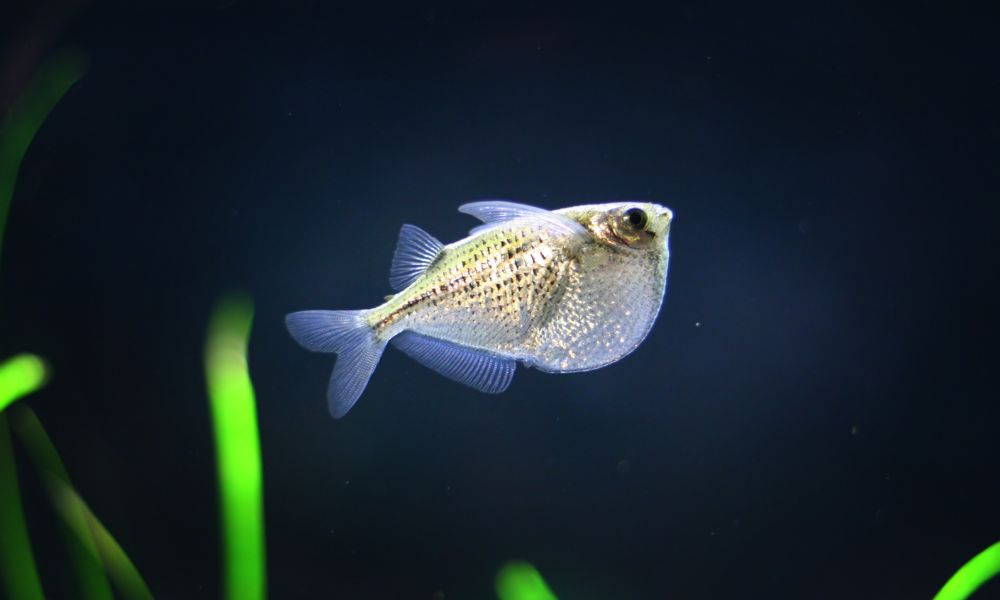
| Features | Details |
| Size | Up to 2.5 inches (6.5 cm) |
| Diet | Omnivorous |
| Temperament | Peaceful, surface dweller |
| Care Level | Moderate |
| Minimum Tank Size | 20 gallons (75 liters) |
Hatchetfish are small and uniquely shaped, known for their deep, hatchet-like bodies. They are predominantly peaceful fish but can show semi-aggressive behavior, especially during feeding times or when establishing territory near the water surface.
These fish can generally coexist well with discus fish if introduced properly. Since Hatchetfish are surface dwellers, they usually do not interfere with the discus, which prefers mid-water levels. Monitoring their interaction in the beginning is essential to ensure a stress-free environment for both species.
Hatchetfish thrive on a varied diet that includes flakes, small pellets, and live or frozen foods like brine shrimp or daphnia. They require an aquarium with a secure lid, as they are known as jumpers. Providing plenty of hiding spaces near the surface, like floating plants, can help them feel secure.
Maintaining stable water conditions and regular tank cleaning is crucial for their health. A well-cared-for group of Hatchetfish can add an interesting dynamic to your discus tank without causing disruption.






